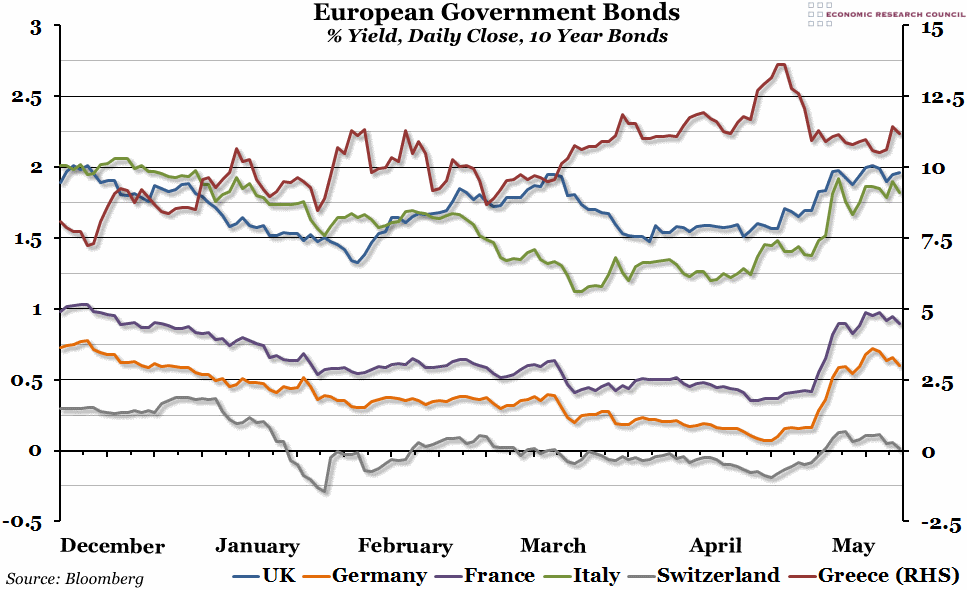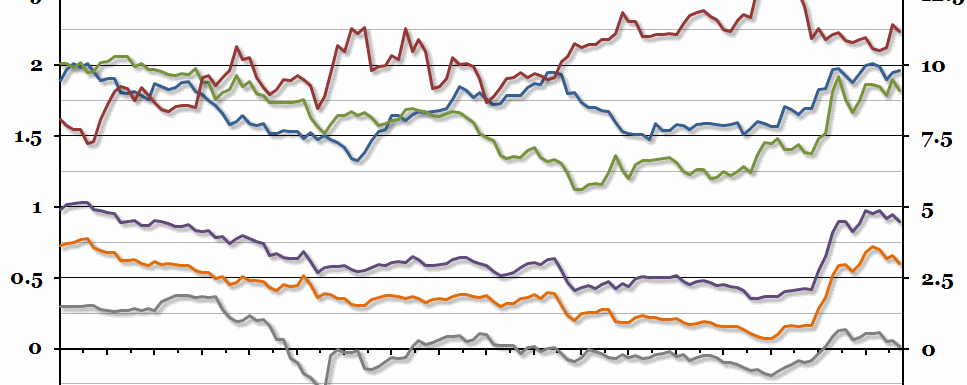
Summary
There have been some interesting movements in the European government bond markets over the past 6 months, ranging from incredible negative yields on 10 year Swiss bonds through to almost 14% yields on Greek bonds. The last few weeks particularly have seen some sharp movement.
What does the chart show?
The chart shows the percentage yield on ten year government bonds (effectively, a measure of the cost of borrowing for governments), as reported at the end of each day of trading, for a number of European countries: France, Germany, Italy, Switzerland, the UK (all measured on the left hand axis), and Greece (measured on the right hand axis)).
Why is the chart interesting?
Up until the end of April, government bond yields in the Eurozone had been historically low, driven down primarily by the announcement of the ECB’s quantitative easing scheme. In Germany, 10 year bond yields almost reached 0% in the middle of April. The Eurozone exception was Greece, where concerns about how the government would pay back their debt kept yields particularly high. Greek bond yields reached a peak of 13.6% on 21st April as fears of a default came to a head.
At the same time, Swiss bond yields have been negative for a large portion of the past six months. They have been driven down by currency conditions, but also because Swiss bonds are seen as a safehaven within Europe due to their status as a financial centre outside the EU. Negative yields on ten year bonds are extraordinary, but they have been the norm in Switzerland for almost the whole of 2015 so far.
At the end of April and the beginning of May, there was a strong shift upwards in bond yields for all the economies on the graph except for Greece (although it is generally more pronounced in Eurozone economies). This might be a general adjustment after yields went too low in response to the ECB plans, or it might reflect a general sell-off as fears of deflation have eased a little. There has been a slight reverse this week, but it is too early to say whether this is anything more than a temporary wobble.

